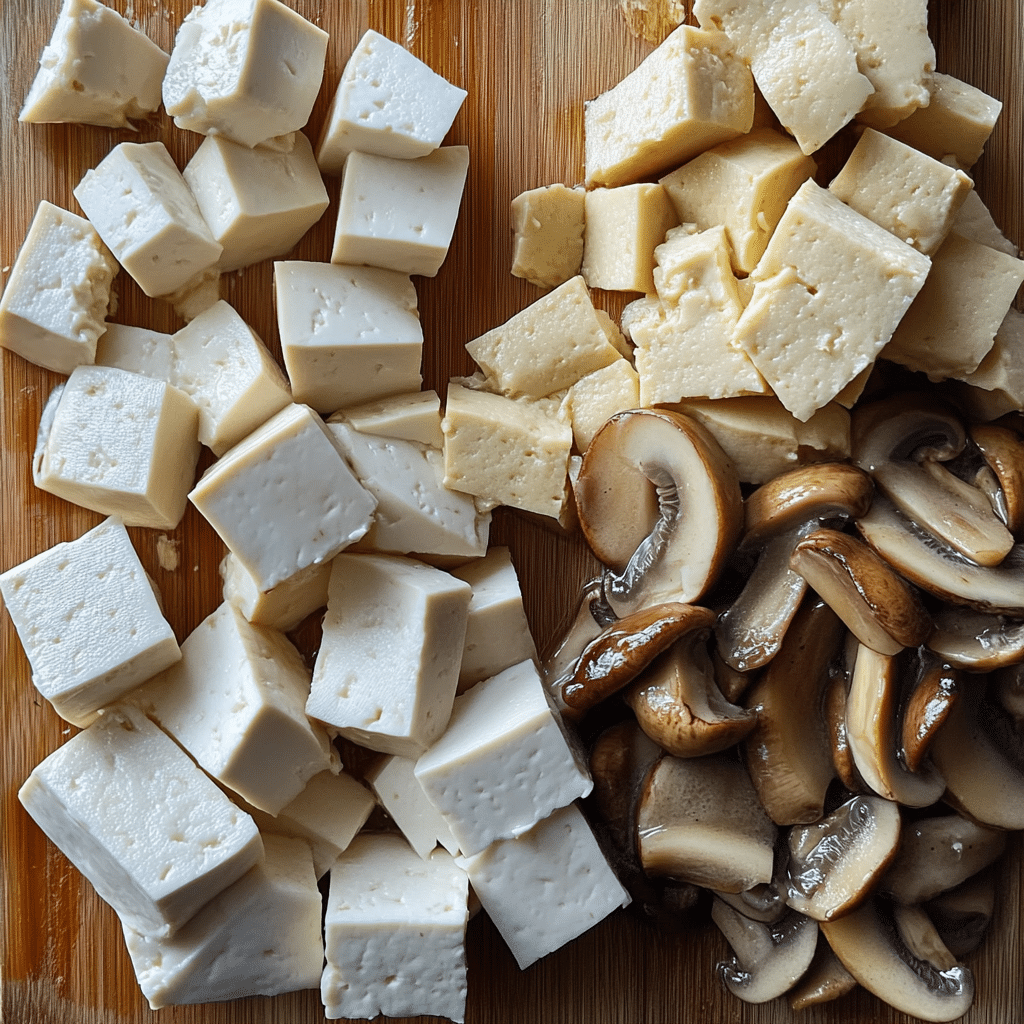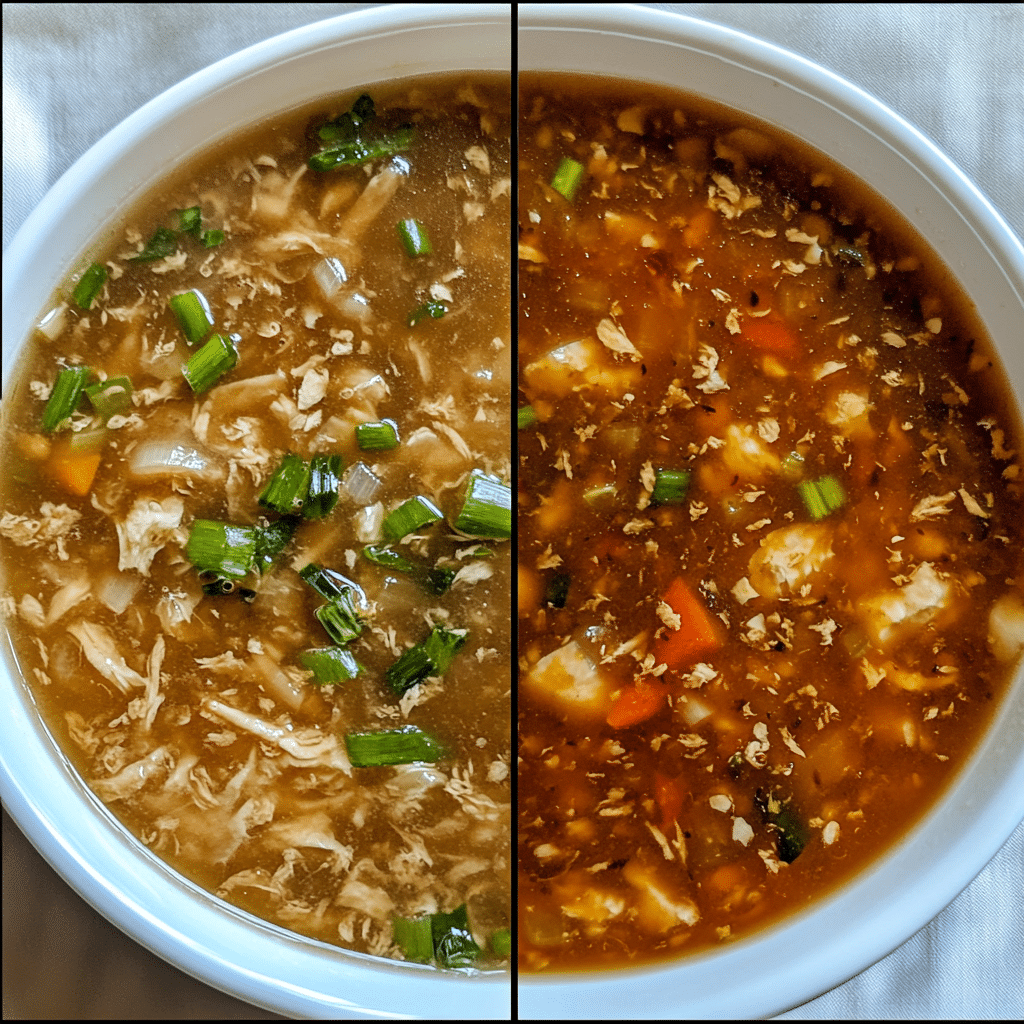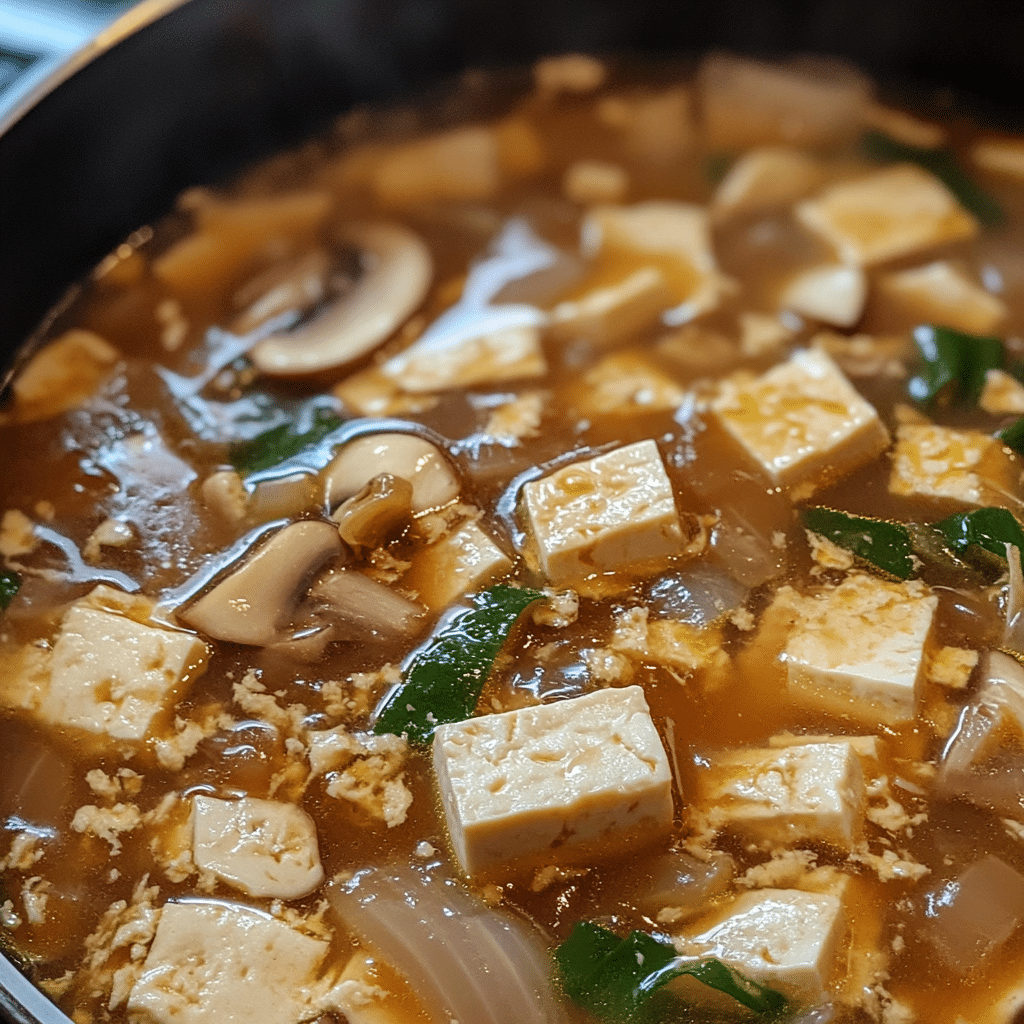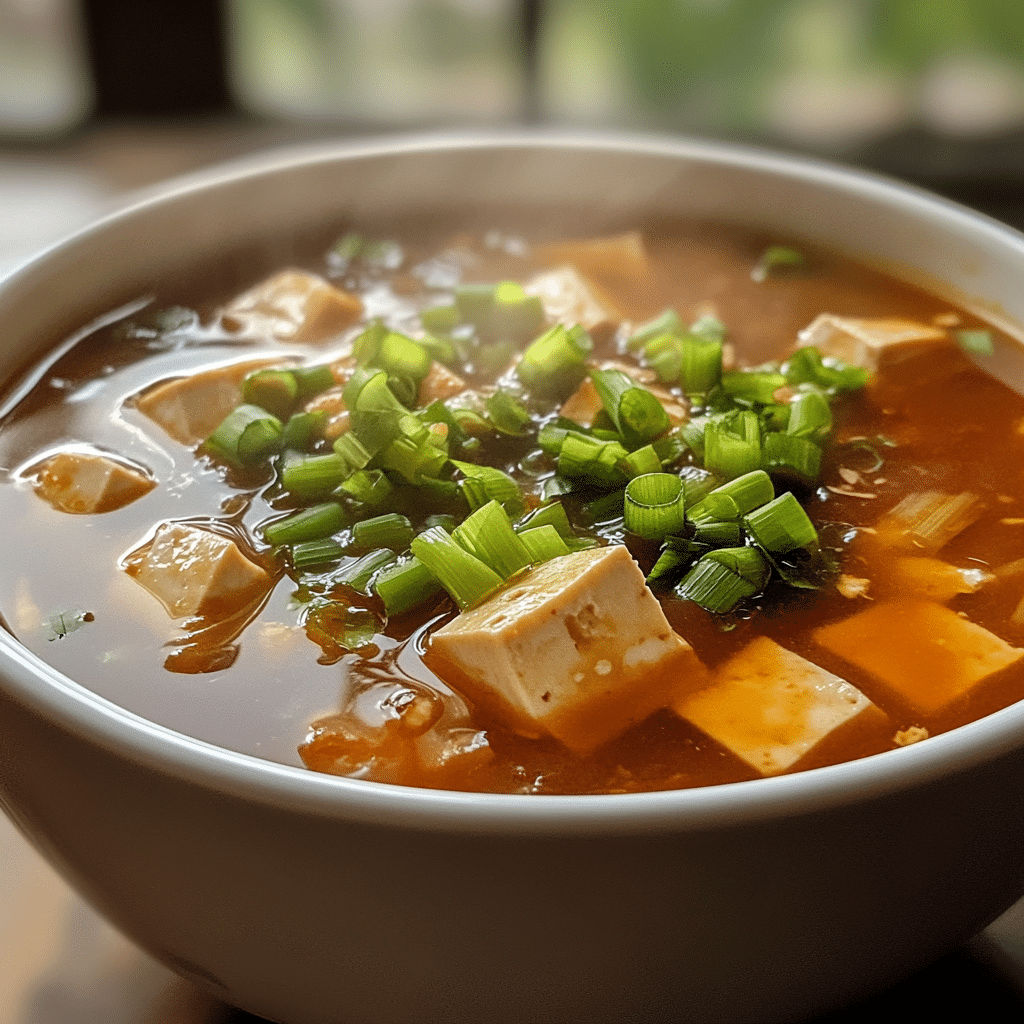Hot and sour soup isn’t just a takeout favorite—it’s a delicious comfort dish with surprising nutritional value. Whether you’re enjoying a steamy bowl from your local Chinese restaurant or whipping up a keto-friendly version at home, knowing what’s in your soup matters. In this in-depth guide, we’ll explore everything from macronutrient profiles and calorie counts to sodium content and health benefits. We’ll also compare homemade to takeout, show you how to tweak it for keto or vegan diets, and answer common questions about soup nutrition and healthy alternatives.
Looking for other weight-loss-enhancing recipes? Don’t miss our guide on Does Phentermine Burn Fat or Just Suppress Appetite?
Table of Contents
ToggleWhat Nutritional Content Of Hot and Sour Soup
Origins and Cultural Background of nutritional content of hot and sour soup
Hot and sour soup has roots in traditional Chinese cuisine, particularly from northern regions like Beijing and Sichuan. It’s known for its bold flavor profile: tangy from vinegar and spicy from white pepper or chili oil. Variants of this soup can also be found across Asia, including Thailand’s tom yum and Vietnam’s canh chua, though each has unique ingredients and broth bases.
Originally, this soup was prized not only for its flavor but also for its warming and restorative qualities. In traditional Chinese medicine, the ingredients are thought to balance the body’s energy—cooling internal heat with sourness and stimulating digestion with spice.
Common Ingredients Used and Their Roles
A typical Chinese hot and sour soup includes:
| Ingredient | Nutritional Role | Notes |
|---|---|---|
| Tofu | High in protein, low in fat | Great plant-based protein |
| Mushrooms (shiitake or wood ear) | Rich in fiber and minerals | Adds umami depth |
| Bamboo Shoots | Low calorie, high fiber | Crunchy texture |
| Eggs | Protein boost | Adds silkiness |
| Vinegar (often rice vinegar) | Aids digestion | Provides tangy flavor |
| White Pepper or Chili | Anti-inflammatory | Adds spice |
| Soy Sauce | Adds sodium | Can be swapped for tamari (gluten-free) |
Some recipes may also include pork strips or chicken for added protein, or thickening agents like cornstarch to give the soup its signature viscosity.
Variations in Different Regions (Chinese, Thai, Vegetarian)
Hot and sour soup takes many forms:
- Chinese Style: The classic combo of tofu, mushrooms, and egg in a vinegar-soy broth.
- Thai Hot and Sour Soup: Often includes lemongrass, galangal, and shrimp—spicier and citrus-forward.
- Vegetarian/Vegan: Skips the egg and meat, doubles down on mushrooms, tofu, and veggie broth.
- Keto-Friendly: Ditches cornstarch, uses low-carb thickening alternatives like xanthan gum, and reduces sugar/sodium.
Nutritional Content of Hot and Sour Soup: The Ultimate Breakdown for Health-Conscious Eaters
5 Stars 4 Stars 3 Stars 2 Stars 1 Star
No reviews
A nutrient-dense, tangy-spicy comfort dish packed with tofu, mushrooms, and bold flavors—customizable for keto, vegan, or gluten-free diets.
- Total Time: 25 minutes
- Yield: 4 servings 1x
Ingredients
4 cups chicken or vegetable broth (or bone broth for keto)
1/2 cup bamboo shoots, julienned
1/2 cup shiitake or wood ear mushrooms, sliced
4 oz firm tofu, cubed
2 eggs, beaten
2 tbsp rice vinegar
1 tbsp low-sodium soy sauce or tamari
1 tsp white pepper
1 tbsp sesame oil (optional)
1/2 tsp xanthan gum or 1 tbsp cornstarch (adjust for diet)
2 cloves garlic, minced
1 tsp grated ginger
Optional: scallions, bok choy, chili oil for garnish
Instructions
1. In a pot, heat broth over medium heat until it begins to simmer.
2. Add bamboo shoots, mushrooms, garlic, and ginger. Simmer for 5–7 minutes.
3. Add tofu and simmer for another 2 minutes.
4. In a small bowl, mix xanthan gum or cornstarch with a bit of cold broth to create a slurry. Stir into the soup.
5. Add soy sauce (or tamari), rice vinegar, white pepper, and optional sesame oil. Stir well.
6. Slowly drizzle in the beaten eggs while gently stirring the soup in a circular motion to create egg ribbons.
7. Simmer 1–2 more minutes, then taste and adjust seasoning if needed.
8. Serve hot with scallions or bok choy as garnish.
Notes
Use tamari or coconut aminos for a gluten-free version.
Skip eggs and use more tofu or mushrooms to make it vegan.
For keto, omit cornstarch and use xanthan gum or enjoy as a broth-based soup.
Add chili oil or crushed red pepper for extra heat.
Make ahead and refrigerate up to 4 days or freeze for longer storage.
- Author: Jessica Lupone!
- Prep Time: 10 minutes
- Cook Time: 15 minutes
- Category: Soup
- Method: Stovetop
- Cuisine: Chinese
Nutrition
- Serving Size: 1 cup
- Calories: 105
- Sugar: 2g
- Sodium: 550mg
- Fat: 5g
- Saturated Fat: 1g
- Unsaturated Fat: 4g
- Trans Fat: 0g
- Carbohydrates: 6g
- Fiber: 1g
- Protein: 9g
- Cholesterol: 55mg
Key Nutrients in Hot and Sour Soup: What You’re Really Eating
Macronutrients: Protein, Fats, and Carbohydrates
Hot and sour soup delivers a surprising nutritional punch in a small serving. A typical 1-cup (240ml) bowl contains:
| Macronutrient | Amount (Approx.) | Source |
|---|---|---|
| Calories | 90–120 kcal | Varies by recipe and thickener |
| Protein | 6–9 grams | Tofu, eggs, sometimes meat |
| Total Fat | 3–5 grams | Egg yolk, sesame oil (if added) |
| Carbohydrates | 6–12 grams | Cornstarch, bamboo shoots |
| Fiber | 1–2 grams | Mushrooms, bamboo, vegetables |
This makes hot and sour soup a fairly balanced option, especially when served as a starter. When made without excess oil or meat fat, it remains light while offering good satiety thanks to the protein and fiber.
Micronutrients: Vitamins and Minerals Commonly Present
Beyond the macros, this soup provides a range of micronutrients that vary by the ingredients used:
| Nutrient | Benefits | Sources |
|---|---|---|
| Iron | Supports oxygen transport in blood | Tofu, mushrooms |
| Potassium | Regulates fluid balance and blood pressure | Bamboo shoots, mushrooms |
| Selenium | Supports immune function | Eggs, mushrooms |
| Vitamin B12 | Brain and nerve health | Eggs, meat (if included) |
| Vitamin C | Immunity and skin health | Vinegar (minor), veggies |
| Folate | Important for red blood cells | Tofu, leafy garnishes |
To amplify these benefits, some versions add bok choy, scallions, or seaweed—each contributing to the micronutrient profile without many added calories.
Role of Tofu, Mushrooms, Bamboo Shoots, and Vinegar
These star ingredients aren’t just for flavor—they’re nutritional heroes:
- Tofu: A lean protein source that’s also high in calcium and iron. It helps support bone density and muscle health, especially for vegans or vegetarians.
- Mushrooms: Known for being low-calorie yet nutrient-dense, mushrooms offer beta-glucans for immunity and selenium for cellular repair.
- Bamboo Shoots: Low in calories but rich in fiber and potassium, they support gut health and blood pressure regulation.
- Vinegar: Adds tang and supports digestion by stimulating stomach acid. Rice vinegar contains trace amounts of amino acids and antioxidants.
Looking for natural fat burners to complement this smoothie? Don’t miss our guide on Mountain Root for Weight Loss, a trending ingredient in metabolism-boosting drinks.

Comparing Nutritional Content: Homemade vs Takeout
Table Comparison: Sodium, Fat, Sugar, and Protein
Takeout soups may be convenient, but do they stack up nutritionally against homemade versions? Here’s a side-by-side look at key nutritional factors:
| Nutrient | Takeout (1 cup) | Homemade (1 cup) |
|---|---|---|
| Calories | 110–150 kcal | 90–120 kcal |
| Total Fat | 5–8 g | 2–4 g |
| Protein | 5–7 g | 6–9 g |
| Carbohydrates | 10–14 g | 6–10 g |
| Sugar | 2–4 g | 1–2 g (or less) |
| Sodium | 900–1,200 mg | 600–800 mg (or less) |
Clearly, homemade hot and sour soup is not only lighter but gives you more control over ingredients and portion sizing. With a few swaps, it’s possible to reduce both sodium and fat without sacrificing the soup’s signature tangy-spicy taste.
Ingredient Transparency and Control in Homemade Versions
When you make your own soup, you know exactly what’s going into it—no MSG, no hidden sugars, and no questionable oils. You can:
- Choose organic or low-sodium broth
- Use pasture-raised eggs or sprouted tofu
- Skip sugar-laden soy sauce for tamari or coconut aminos
- Add more vegetables or fiber-rich mushrooms
Homemade versions also let you tailor macros for keto, paleo, vegan, or low-sodium needs. You get flexibility, freshness, and higher nutritional quality.
MSG and Preservatives in Takeout Options
Takeout soup often contains MSG (monosodium glutamate) and preservatives to enhance flavor and extend shelf life. While MSG is considered safe in small doses, it may cause sensitivity symptoms in some people (headaches, sweating, flushing).
Additional additives to watch for include:
- Disodium inosinate and guanylate: Flavor enhancers used with MSG
- Modified starches: For texture, but can spike blood sugar
- Artificial colorings: Sometimes used to enhance the broth’s hue
Homemade soup skips all that. If you’re eating hot and sour soup regularly, making it yourself ensures you’re not unknowingly ingesting additives or excessive sodium.
And if you’re looking for more detox-friendly ideas, don’t miss our powerful Mountain Root for Weight Loss

How to Make Your Own Nutrient-Dense Hot and Sour Soup
Best Ingredients to Boost Nutrition
If you’re ready to make hot and sour soup at home, focus on whole ingredients that bring both flavor and function. Here’s a breakdown of what to use and why:
| Ingredient | Nutritional Benefit |
|---|---|
| Tofu | High in protein, calcium, and iron |
| Shiitake mushrooms | Beta-glucans, fiber, immune-boosting properties |
| Bamboo shoots | Low-calorie fiber, adds bulk |
| Eggs | Protein, vitamin B12, healthy fats |
| Bone broth | Collagen, amino acids, electrolytes |
| Rice vinegar | Aids digestion, adds brightness |
| Tamari (or low-sodium soy) | Gluten-free, reduced sodium umami depth |
| Ginger & garlic | Anti-inflammatory, gut-friendly |
To take it up a notch, add bok choy, seaweed, or sprouts for extra fiber, antioxidants, and crunch.
Tips for Reducing Sodium Without Sacrificing Flavor
Sodium is one of the biggest pitfalls in hot and sour soup, but there are ways to cut back without losing that bold, savory punch:
- Use low-sodium broth as your base.
- Replace part of the soy sauce with rice vinegar or coconut aminos.
- Add spice (white pepper, chili oil) to enhance flavor perception.
- Simmer with aromatics like ginger, garlic, scallions, and even lemongrass.
- Incorporate umami-rich mushrooms or a splash of fish sauce for complexity.
Bonus: Make a flavor paste with tamari, garlic, vinegar, and a dash of sesame oil. Stir in at the end for a flavor boost that requires no salt.
Cooking Techniques That Preserve Nutrients
Nutrient retention starts with your cooking method. Follow these best practices:
- Simmer instead of boiling: Boiling can destroy water-soluble vitamins.
- Add vinegar last: This keeps its probiotic properties and tang.
- Swirl eggs at the end: Gently stir in beaten eggs once heat is off to preserve texture and nutrients.
- Use a lid: Traps heat and prevents nutrient-rich steam from escaping.
- Quick soak mushrooms: To preserve texture and reduce leaching of minerals.
By preparing your soup this way, you’ll retain more of the micronutrients like vitamin B, C, potassium, and antioxidants that usually degrade with high heat or long cook times.

Conclusion About Nutritional Content Of Hot and Sour Soup
Hot and sour soup isn’t just a bold and comforting favorite—it’s also a surprisingly nutrient-dense option when prepared mindfully. Whether you’re going low-sodium, keto, vegan, or gluten-free, this adaptable dish can meet your dietary needs while delivering satisfying flavor.
By making it at home, you gain full control over ingredients, sodium levels, and calorie content—without compromising on taste. From gut-friendly spices to high-protein tofu and immune-boosting mushrooms, hot and sour soup is a bowl full of wellness.
Don’t miss our Vegetarian Soups That Fill You Up for more healthy inspiration in your meal planning.
For more recipes Follow me in our Social media
Facebook: https://www.facebook.com/profile.php?id=61573913076847
Pinterest: https://www.pinterest.com/momandgrandmacooks/
Medium: https://medium.com/@momandgrandmacooks
Frequently Asked Questions About Nutritional Content Of Hot and Sour Soup
Can I freeze keto edible cookie dough?
Yes, you can freeze keto edible cookie dough for up to 3 months. Just shape it into balls or press it flat in a sealed container. When you’re ready to enjoy, allow it to thaw at room temperature for 15–20 minutes. Be sure to use keto-approved ingredients like almond flour, coconut flour, erythritol, and sugar-free chocolate chips. Freezing doesn’t affect texture or taste much, and it makes it easy to portion ahead for snacks or desserts.
Can I make it with coconut flour?
Absolutely—but with caution. Coconut flour is highly absorbent, so you’ll need far less than other flours. For every 1 cup of almond flour, use just 1/4 to 1/3 cup of coconut flour, and increase your liquid ingredients (like butter or cream) to keep the dough moist. It’s also a great way to boost fiber and reduce net carbs in your edible cookie dough. The flavor is slightly sweeter and more tropical, but pairs well with vanilla, cinnamon, or nut butter.
Is it safe to eat cookie dough?
If you’re making edible cookie dough, then yes—it’s safe to eat raw as long as you omit eggs and untreated flour. For maximum safety:
Use heat-treated almond or coconut flour (or pre-sterilized versions).
Avoid raw eggs (or use pasteurized egg alternatives if needed).
Store it in the fridge and consume within a few days.
Edible cookie dough is designed to skip ingredients that pose salmonella or E. coli risks, so when made correctly, it’s totally safe—and delicious.








